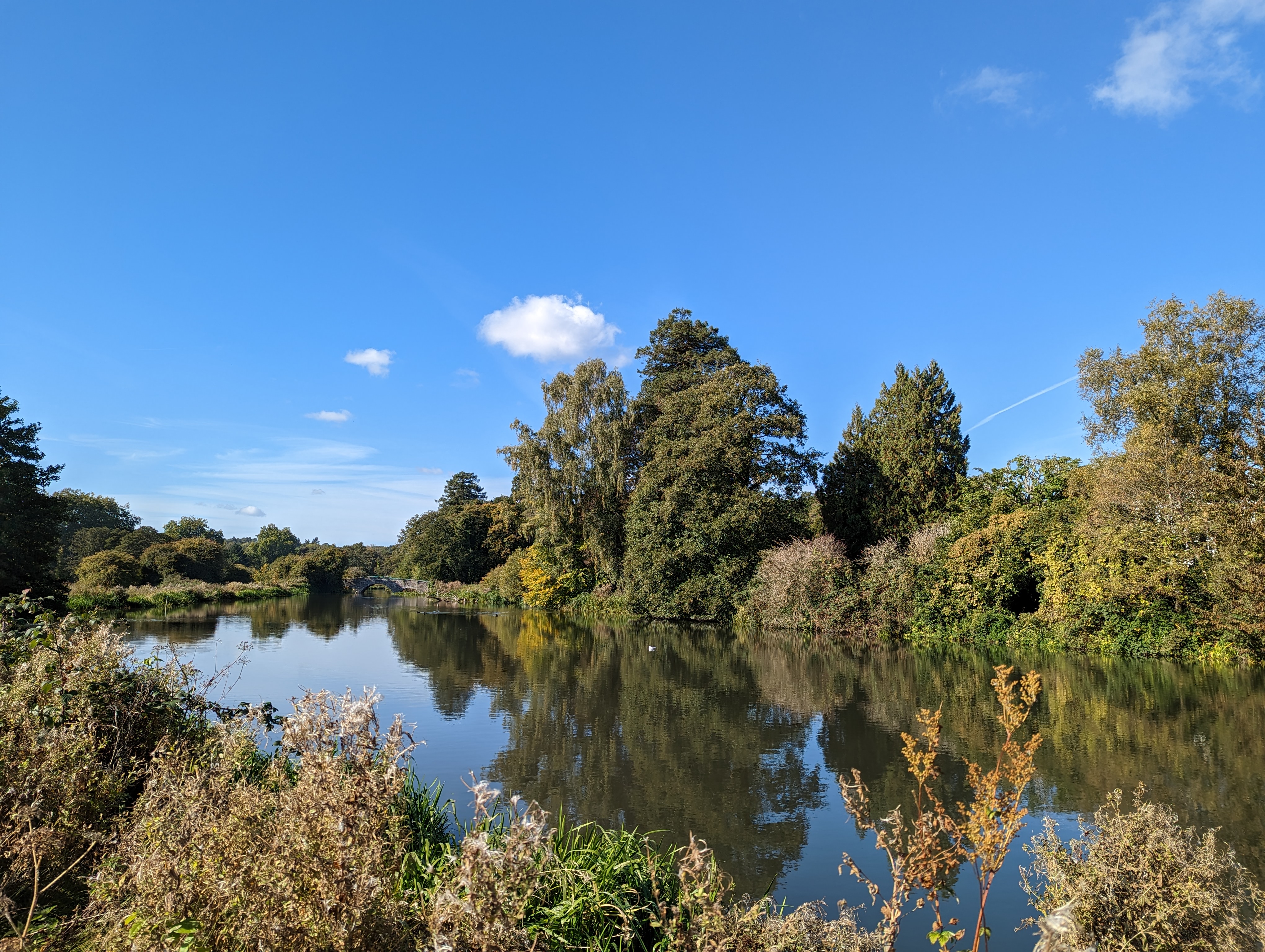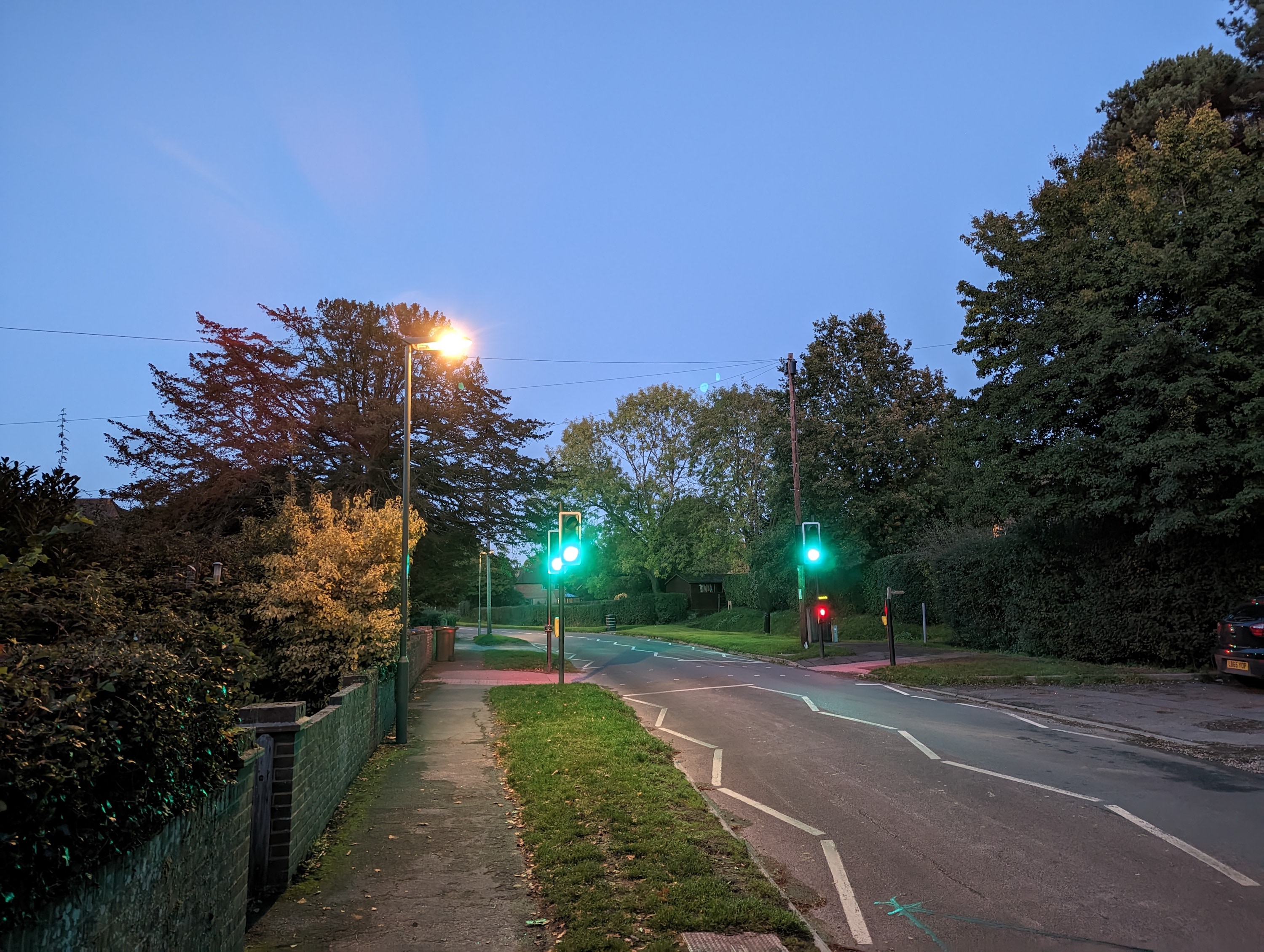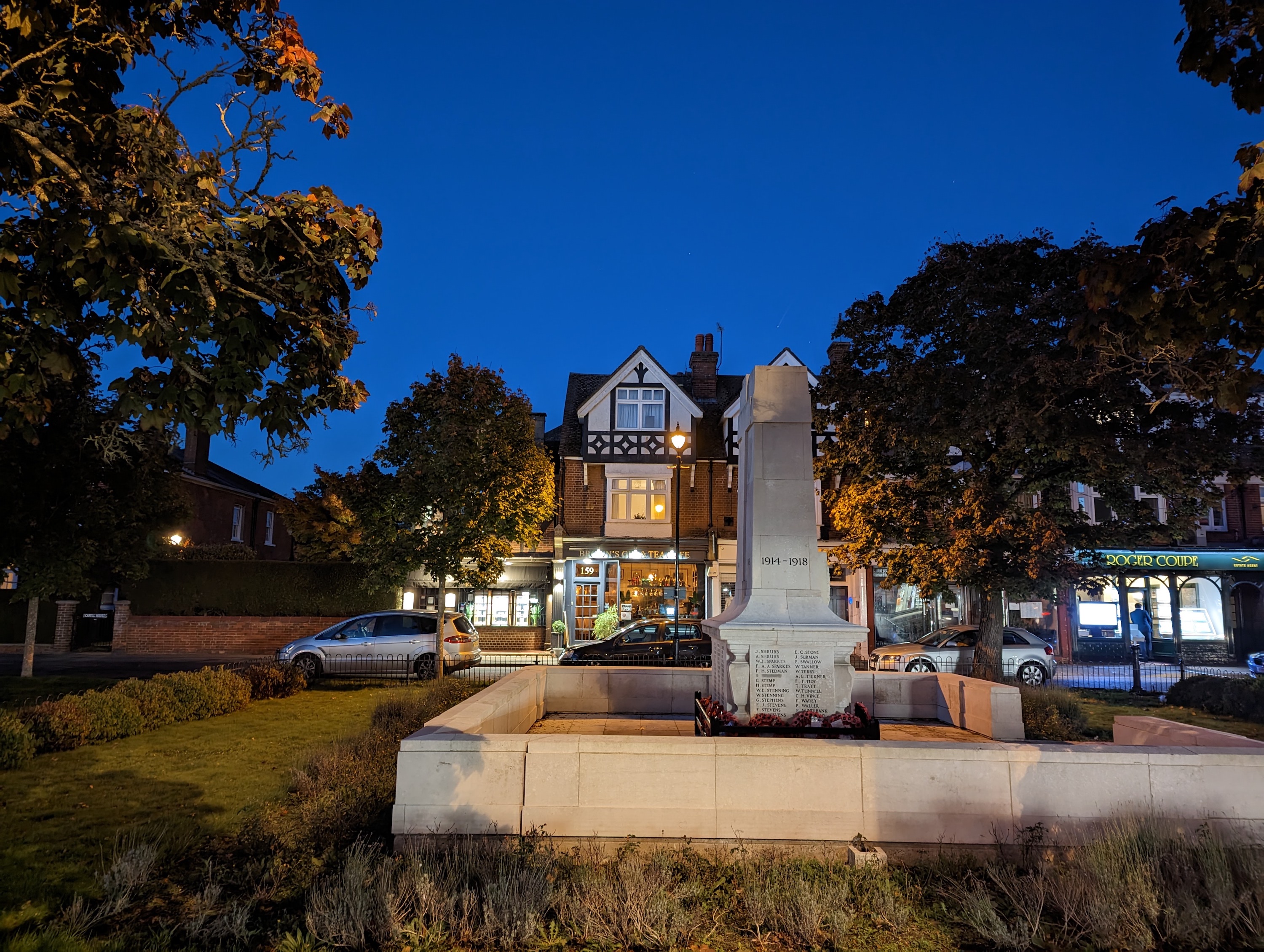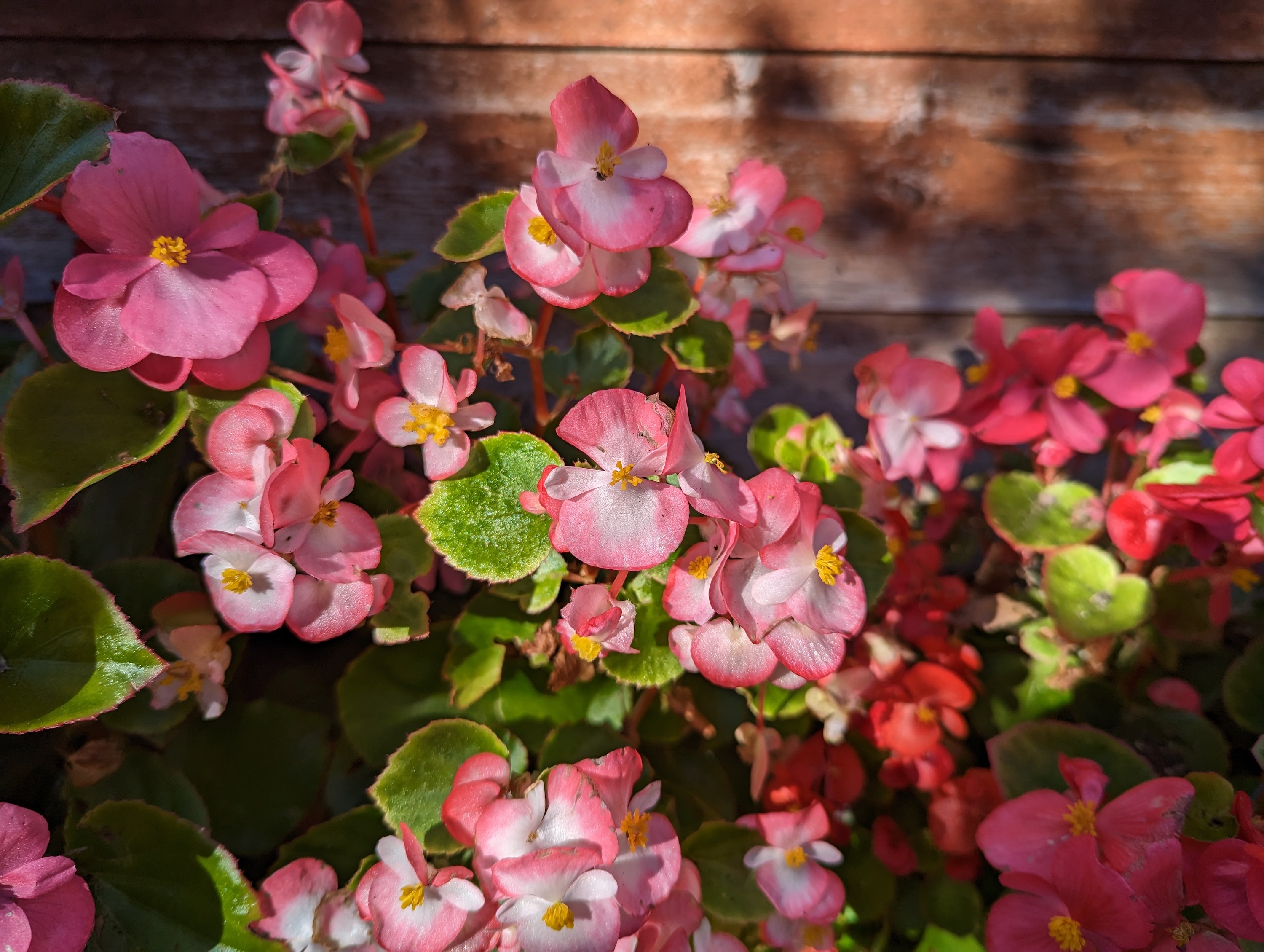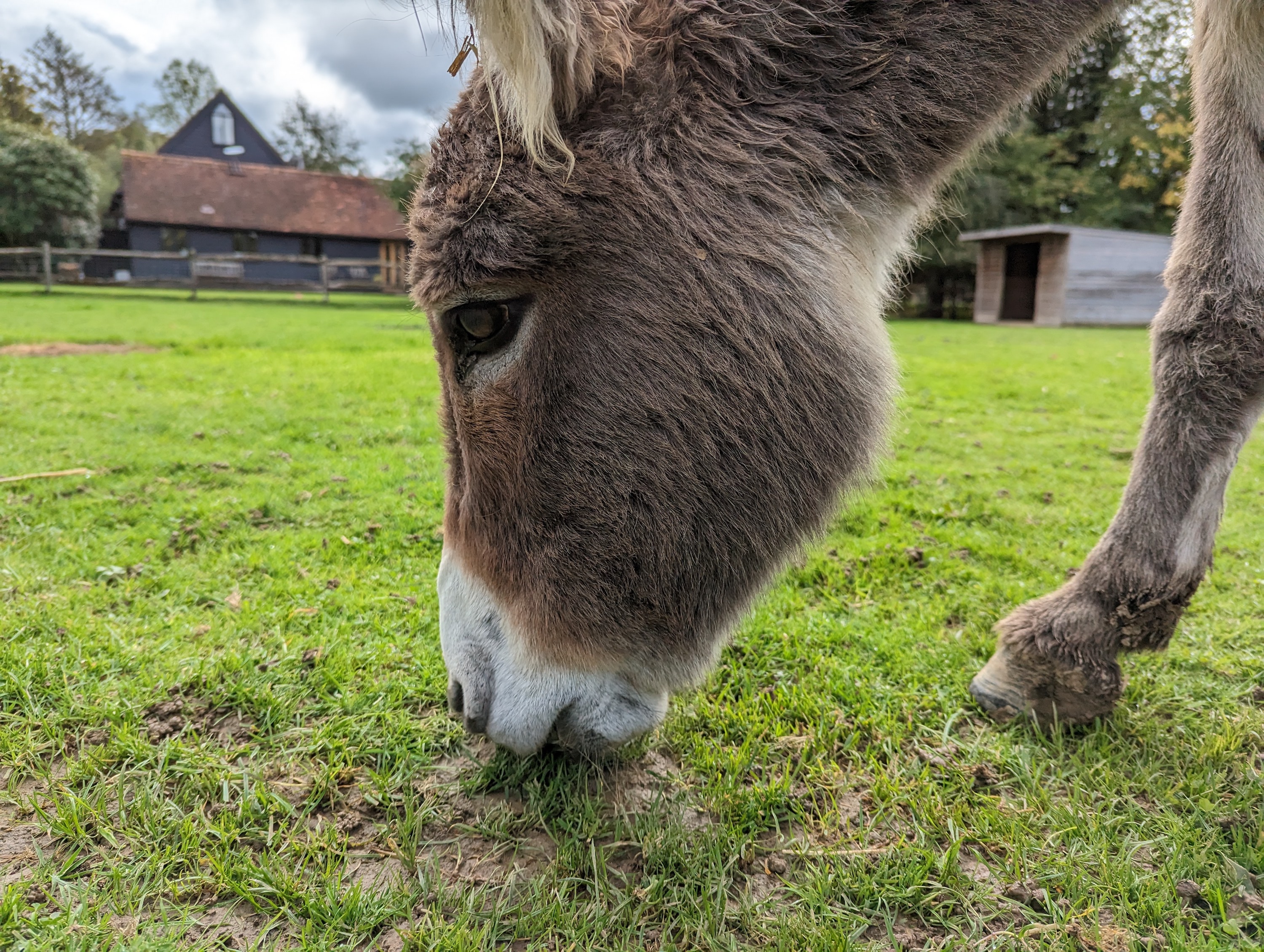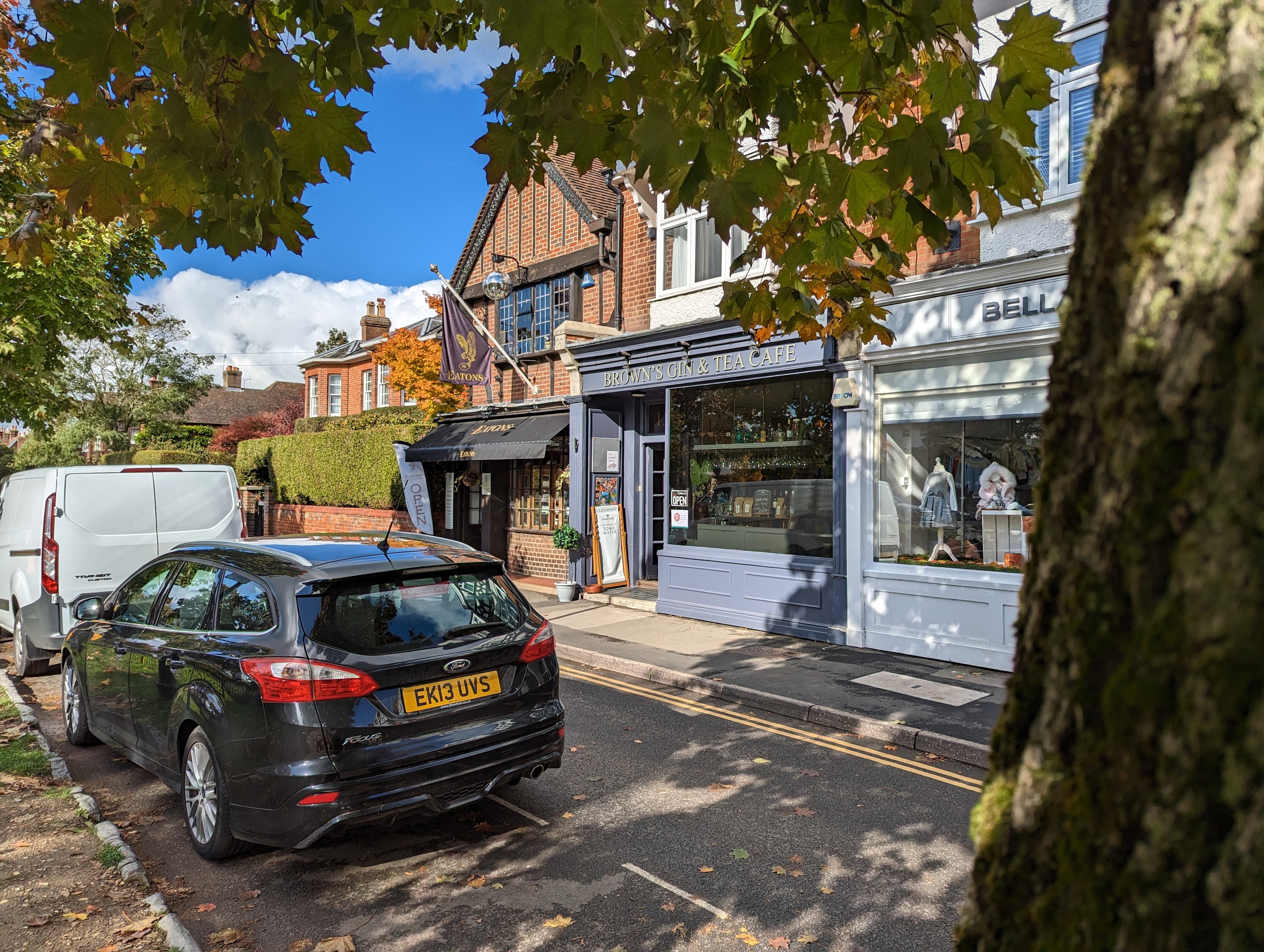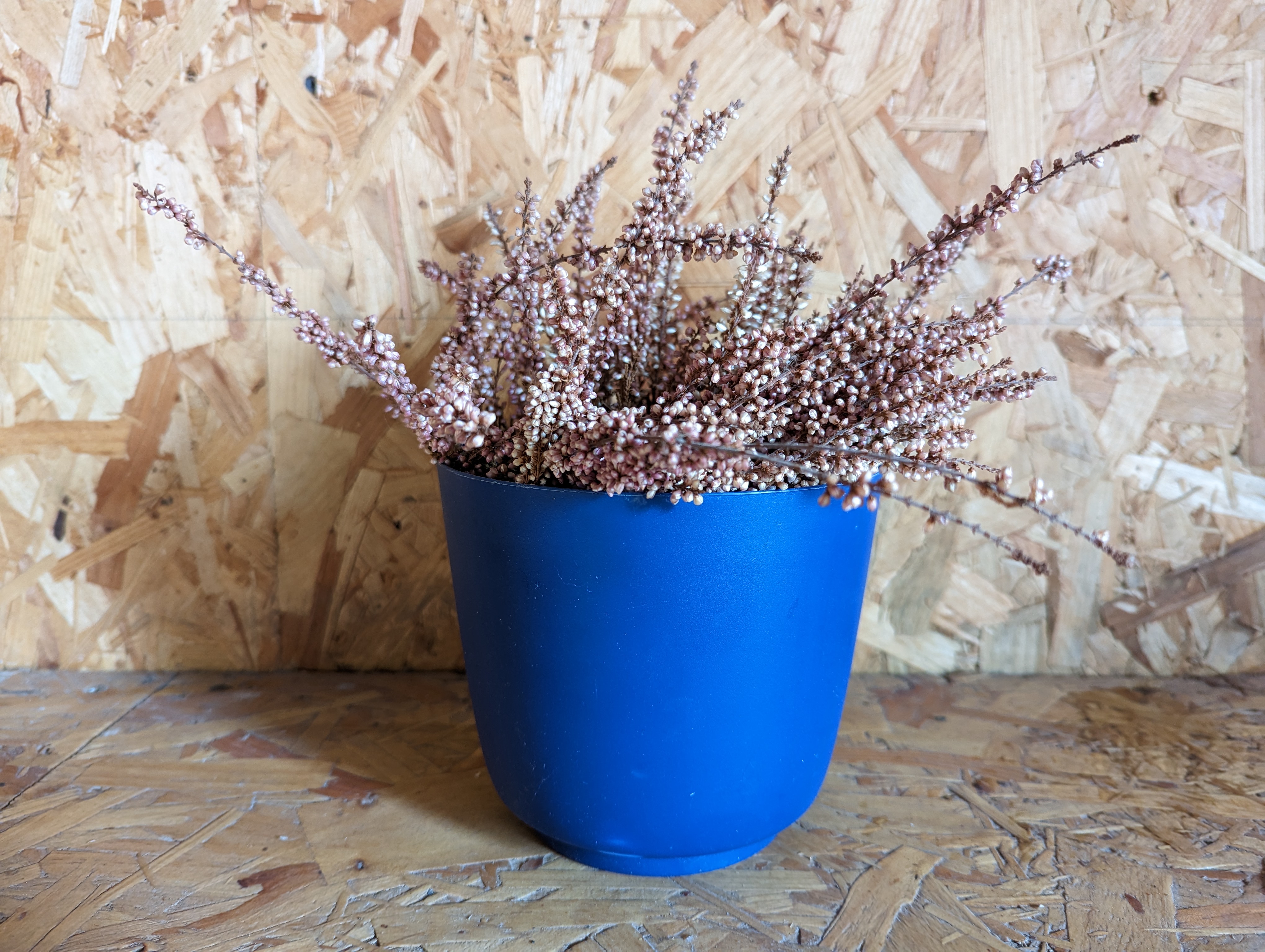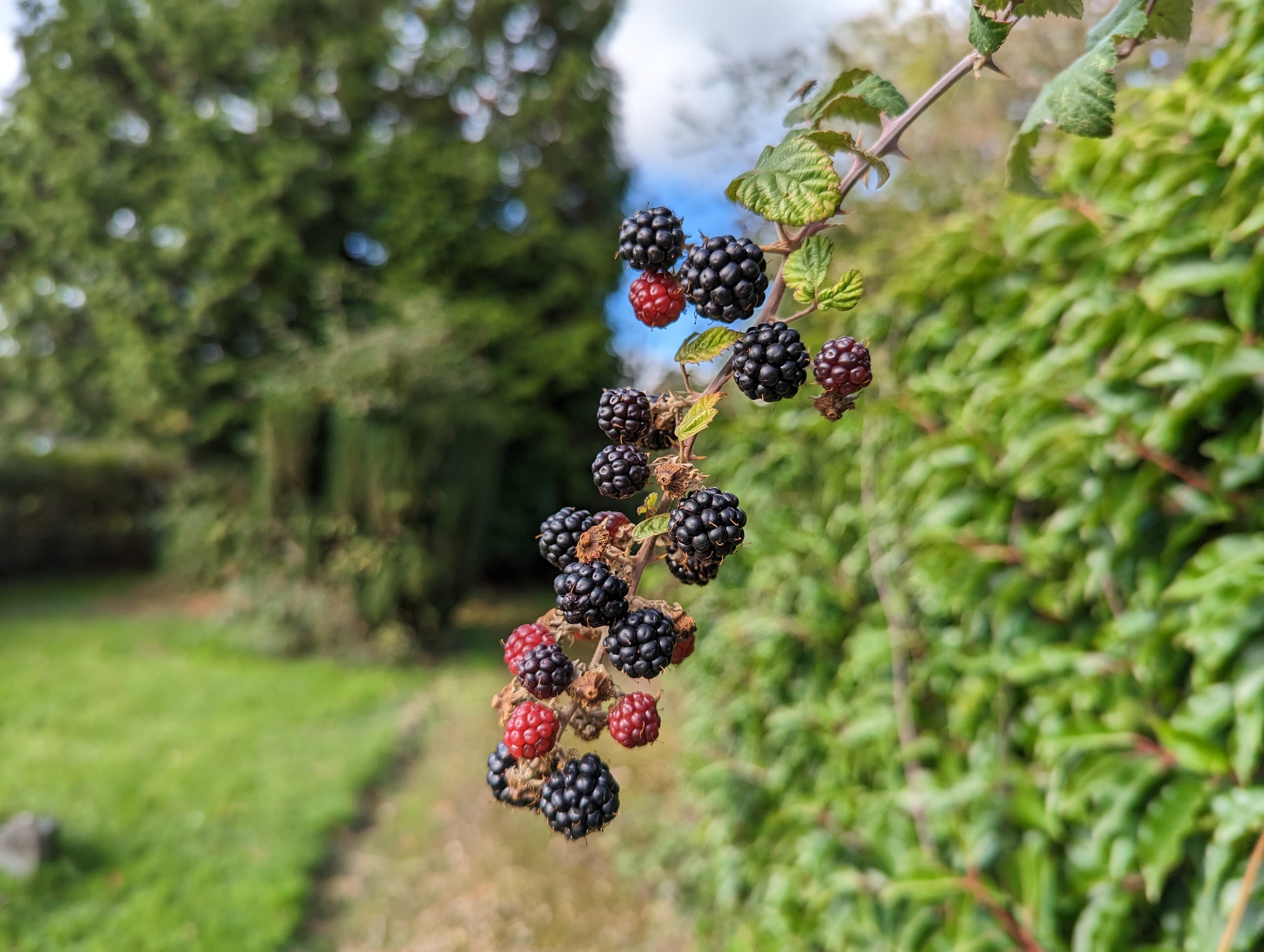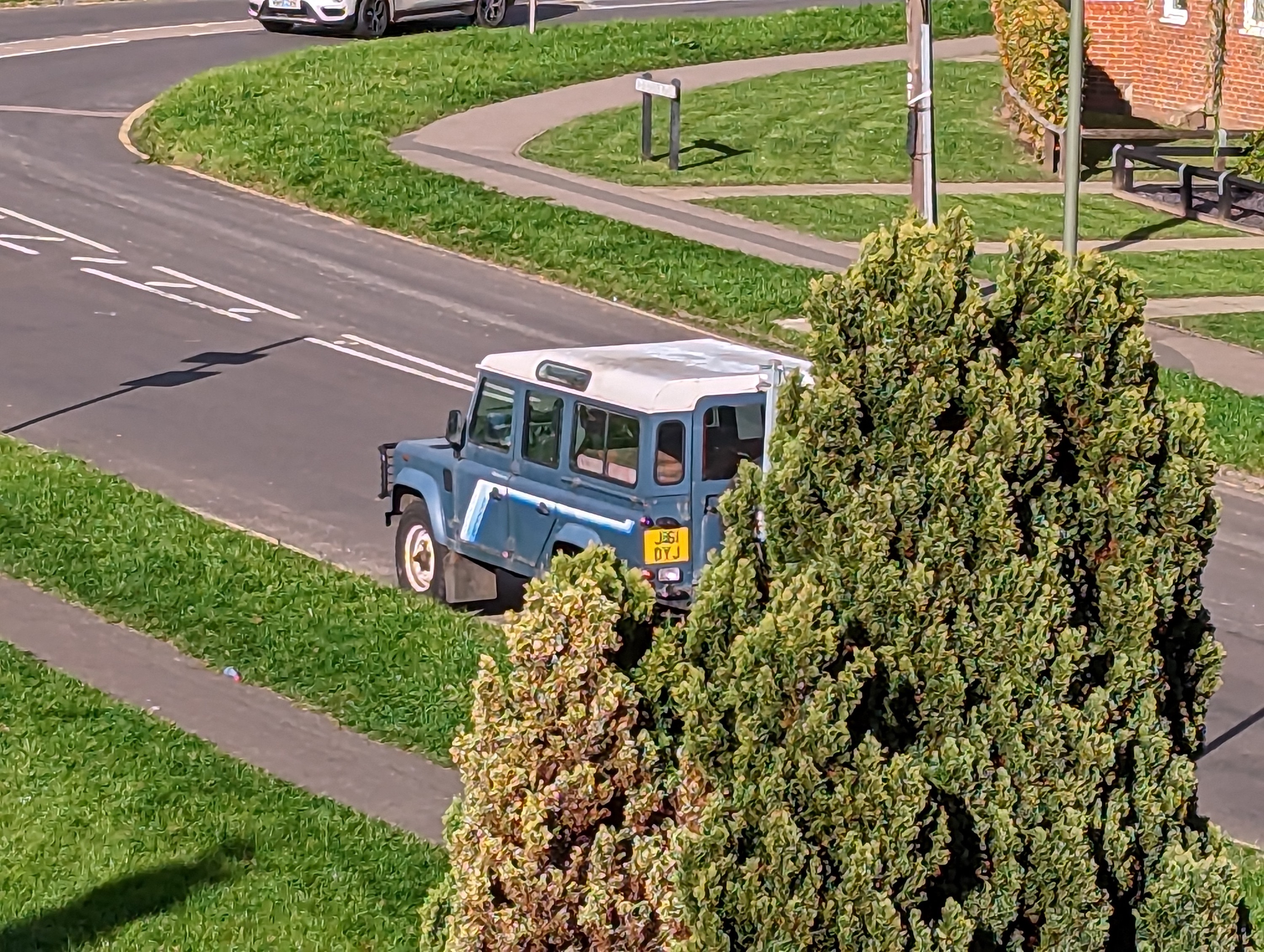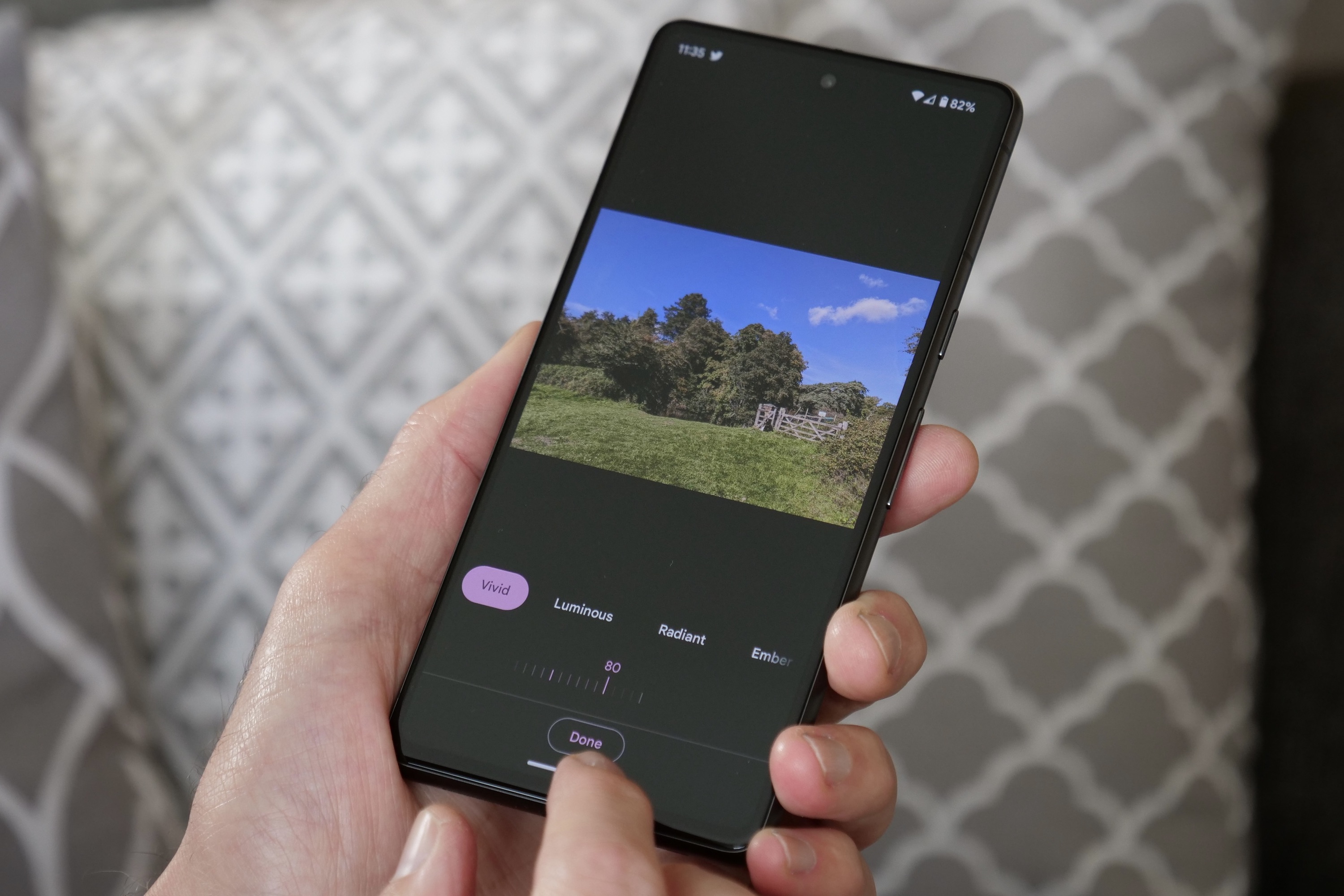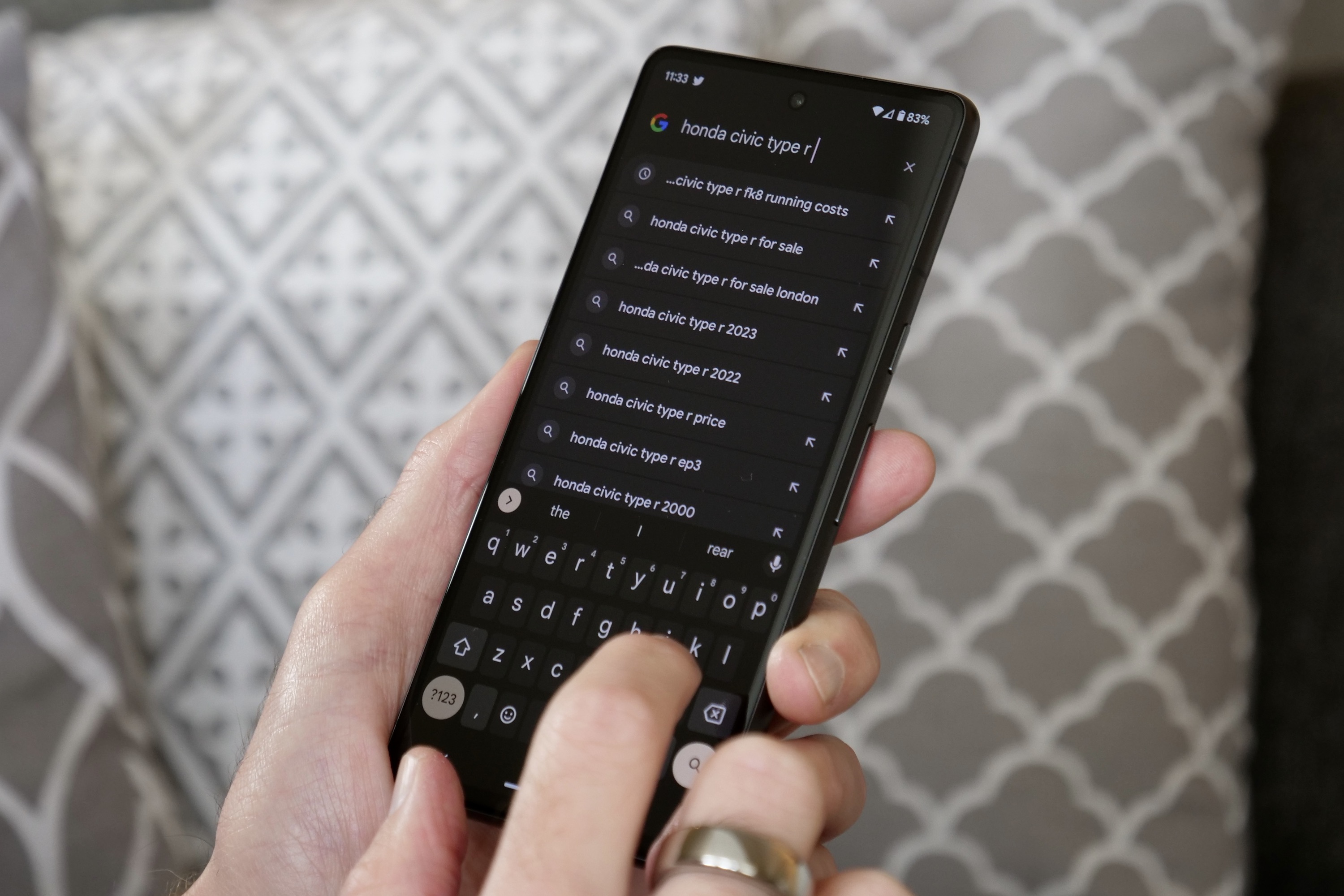“The Google Pixel 7's superb camera, long battery life, and great software experience are a winning combination — and the reasonable price makes it hard to resist.”
- Superb camera
- Long battery life
- Eye-catching design
- Vibrant screen
- Years of software updates
- Fantastic price
- Slow charging
- Software bugs
- Poor gaming performance
You need to have confidence in your smartphone. I’m confident in my Google Pixel 7, as it has done almost everything I asked of it and sometimes even exceeded my expectations. However, there is some evidence my confidence shouldn’t be taken as proof that you’ll be equally as happy and confident in the Pixel 7 you buy. There is a cloud hanging over this otherwise excellent smartphone, but should it affect your decision to buy it?
Google Pixel 7 design and security
The Pixel 7 isn’t a design revolution compared to the Pixel 6, and that’s the best thing that could have happened. It gives Google a cohesive, recognizable, and attractive smartphone platform on which to build. Rather than drastically rework the shape, Google has refined it, making the visor-like camera module even more of a standout design element while changing the available colors so it doesn’t look exactly the same as last year’s phone.
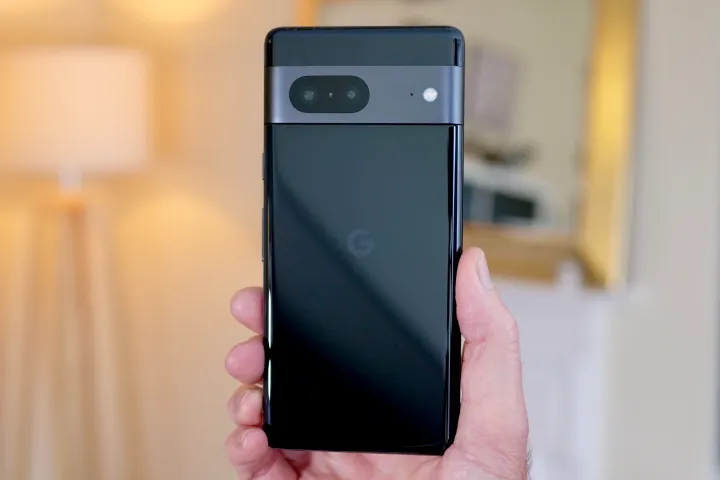
I’ve been using the standard Obsidian black version, and although I often find black phones a little bland, the glossy finish on the glass back looks superb when paired with the matte gray camera module. More colorful Lemongrass and Snow versions are also available. The camera cutouts are larger than before, but aren’t an eyesore. I’m not so sure about the Pixel 7 Pro’s more outrageous camera module, but certainly the Pixel 7 is a modern-looking, subtly stylish, and suitably different-looking smartphone I’ve been proud to carry around.
At 8.7mm thick and 197 grams, it’s no skinny supermodel, and it feels very substantial in your hand, similar to the slightly shorter but similarly weighted iPhone 14 Pro. The smooth aluminum chassis and glossy Gorilla Glass Victus rear panel may look lovely, but together they make the Pixel 7 quite slippery. It does like to slide around on different surfaces, and it needs a firm grip if you want to use it with one hand.
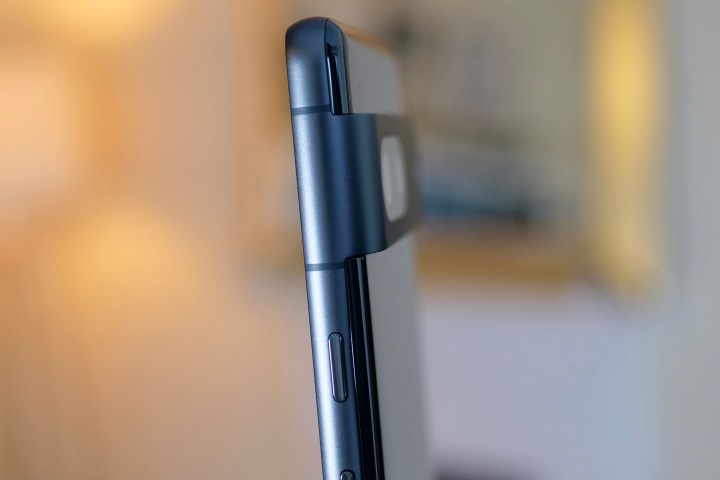
There is one build quality thing that bothers me. At the bottom of the phone, the glass rear panel meets the chassis smoothly, with no obvious change when you run your finger over the join. Do the same on the top and the sides, and there’s a small lip that also varies in severity on either side of the device. It’s not a massive problem, but once you notice it, you always notice it.
There’s a fingerprint sensor under the display, and just like with the Pixel 6 and Pixel 6 Pro, it can’t decide whether it wants to be fast and reliable or slow and irritating. It’s shockingly inconsistent, and no better than the previous version. Google’s advice of pressing the sensor for a beat longer than you may expect does help it unlock more regularly, but it by no means cures the problems. When it fails (which it will), you must use the PIN code, but the button layout is very widely spaced and almost impossible to press accurately when holding the phone with one hand.
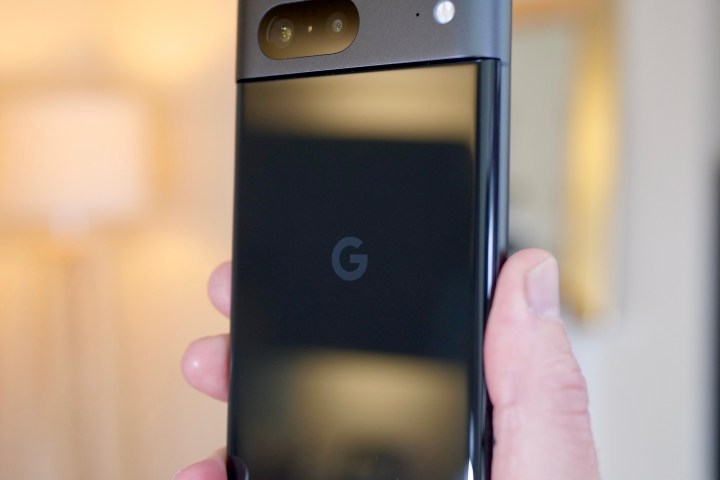
A face unlock system has been introduced, and it works more consistently than the fingerprint sensor. But remember to flick the switch to bypass the lock screen when it sees your face. If you don’t, you have to either swipe the screen (which doesn’t always work) or press the unlock button to enter the phone — adding more unnecessary steps to the often lengthy process of actually starting to use the Pixel 7.
Google must have heard the complaints about the fingerprint sensor on the Pixel 6, and yet despite having a year to improve it without compromising on security, it’s still worse than almost every other phone available. It’s a shame as it’s the first thing you encounter after picking up the Pixel 7 and delighting in its excellent overall shape and design.
Google Pixel 7 camera
There are two cameras on the back of the Pixel 7, a 50-megapixel f/1.9 aperture main camera (the same one found on the Pixel 6) with optical image stabilization (OIS) and laser autofocus, plus a 12MP f/2.2 wide-angle camera with a modest 114-degree field-of-view. Video reaches 4K resolution at up to 60 frames per second (fps) and it supports 10-bit HDR. On the front is a 10.8MP f/2.2 aperture selfie camera.
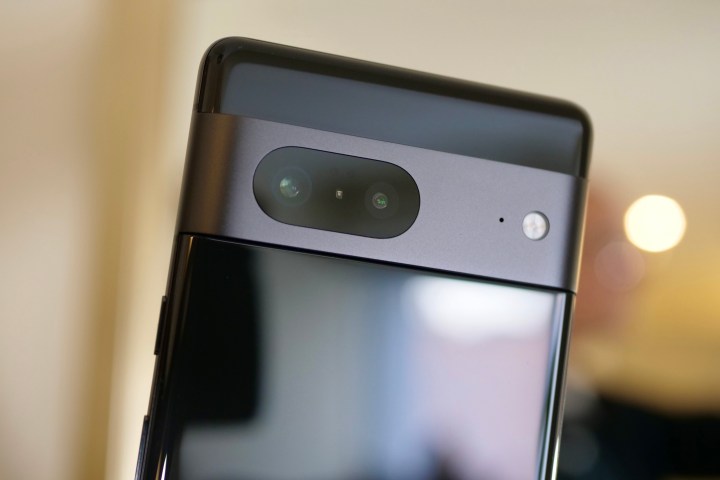
The Pixel 7’s main camera is wonderful, producing sharp, vibrant, balanced, and visually punchy photos in almost every situation. Point it in any direction, in any lighting situation, and there is a very high probability it will take a photo you’ll love. I adore that I don’t have to think twice about taking a picture, or worry that it’s going to be less impressive than what I’m seeing with my own eyes. In the Pixel 7’s case, the photo can look better than real life, due to the way it often deals with light and shadow.
There’s excellent consistency between the main and wide-angle cameras too, while Night Sight mode pictures bring out plenty of detail without sacrificing atmosphere or introducing too much smoothing. It can struggle when you try to get too close to a subject though, often telling you to move back so it can focus better, but when it does find the right distance, the results look excellent. The optical 2x zoom photos look decent, but can lack the color and great exposure seen with the main camera.
The biggest disappointment is the selfie camera, which I find doesn’t always get skin tone right (despite Google’s efforts in this area) and can lack detail too. It’s not terrible, just inconsistent compared to the Galaxy Z Flip 4’s superb selfie camera and the iPhone 14 Pro’s ever-reliable front camera. The Pixel 7 does not have the Pixel 7 Pro’s Super Res Zoom and only digitally zooms into an 8x level, where digital enhancement is obvious.
Dig into the editing suite, and there are plenty of options to change your images, with many features relying on Google’s A.I., such as the ability to change the tone and look of the sky. The new Unblur tool sometimes works really well, but other times either unpleasantly smooths everything out, or seems to rearrange facial features in a rather terrifying way. Both the Long Exposure and Action Pan modes seen on the Pixel 6 series return too.
It’s one of the very best cameras on a smartphone at the moment, at any price.
Cinematic mode is the new video feature that blurs out the background around a subject. It’s only available on the rear camera and although I’ve not had many opportunities to use it, the effect is quite convincing. It’s not as truly “cinematic” as the iPhone’s similar Cinematic Mode as it doesn’t have the fancy refocus feature. It does feel quite gimmicky and I don’t know when I’d actually use it.
The Pixel 7 may not be quite so feature-packed as the Pixel 7 Pro, but it still takes fantastic photos, and I’ve found it fun to experiment with the different editing suite features. The main camera is one of the very best cameras on a smartphone at the moment, at any price, and unlike certain other aspects of the phone, I have true confidence in its ability.
Google Pixel 7 screen, connectivity, and audio
The 6.3-inch AMOLED screen has a 90Hz refresh rate and a 2400 x 1080 pixel resolution, and is HDR10+ certified. There are stereo speakers on the body, and it supports 5G, Wi-Fi 6e, and Bluetooth 5.2 with AptX audio. The screen looks great and while the 90Hz refresh rate isn’t noticeably smoother than 120Hz screens I’ve used, it’s far more preferable to a 60Hz panel. Audio is only average, with the tinny speakers getting confused and muddled with complex music.

Bluetooth works without a problem, and music through my Audio Technica ATH-M50xBT sounds fantastic. However, the phone constantly shows a “Problem connecting. Turn device off and back on” message under the Bluetooth settings, despite all Bluetooth headphones I’ve used functioning correctly. In true IT Crowd fashion, I did turn them all off and on again, but the message persists.
While calls and network connection have been faultless, the Pixel 7’s Wi-Fi range seems to be quite short, or at least shorter than the iPhone 14 Pro and Google Pixel 5 that have sat alongside it over the past week. It has regularly dropped the Wi-Fi connection when the other two phones still show several bars of reception. I’ve also noticed covering the top-left corner of the phone can affect Wi-Fi connectivity.
Google Pixel 7 battery and charging
Given the Pixel 6 and 6 Pro’s barely average battery life and the news the Pixel 7 only has a 4355mAh cell inside, many will be expecting the new series to be equally as disappointing. However, there’s some good news as my Pixel 7 has provided robust battery life even when using it for a long time. On days when I used the phone for everything except gaming — that includes GPS use — the Pixel 7 has managed six or seven hours of usage and lasted from around 7 a.m. to late at night.
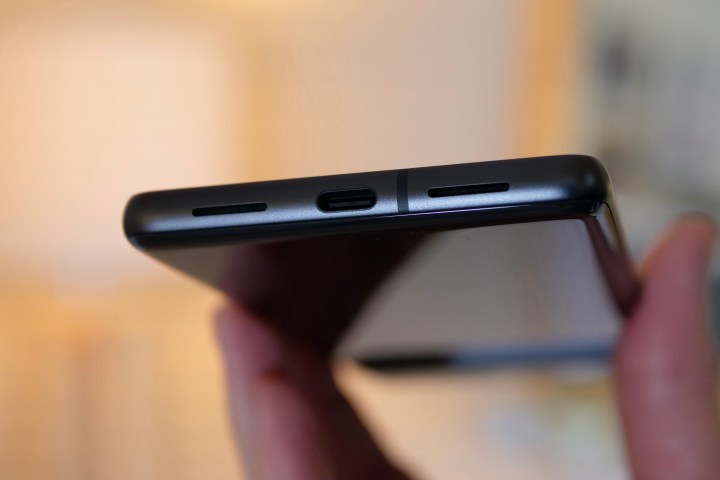
Seeing as it has also been connected to my Pixel Watch during this period, and often alternated between Wi-Fi, 4G, and 5G, I’ve been pleasantly surprised by the Pixel 7’s longevity. Hard use isn’t going to see it last past a day, but with moderate use, I can see two working days being achievable. Considering past Pixel performance and the smallish battery capacity, the Pixel 7’s battery life is far better than it has any right to be. It’s also massively more efficient than the Pixel 7 Pro, based on our experience with that phone.
This is surprising as there’s not a ton of hardware differences between the two, and the Pixel 7 Pro has a substantially larger cell inside. By rights, the 7 Pro should be the phone with great battery life, and the Pixel 7 should be nothing more than average. Instead, it’s the other way around. Is it all good? No. The Pixel 7 isn’t happy when playing games, and they negatively affect battery life more severely than any other task. Just 15 minutes of playing a game can rob between 5% and 10% of the battery, and my worst days of battery life were always ones with more than 30 minutes of gaming. But even my worst days with gaming have been pretty good, with a fully charged battery surviving five-and-a-half hours from early in the morning until midnight.
What about charging? You don’t get a charger in the box, but the phone supports USB Power Delivery 3.0 and is claimed to charge up to 50% in 30 minutes. A full charge takes a lot longer than this, and using a compatible USB Type-C charger takes nearly two hours if you go from zero percent. This isn’t good when many other companies are introducing fast charging, such as the OnePlus 10 Pro and the OnePlus 10T.
Google Pixel 7 software and performance
The Pixel 7 uses Google’s new Tensor G2 processor and comes with 8GB of RAM and either 128GB or 256GB of internal storage space. The chip is built using a 5nm process, so it’s not as efficient or “modern” as Qualcomm’s Snapdragon 8+ Gen 1 or the MediaTek Dimensity 9000, both of which use a 4nm process. Installed is Android 13, making it one of the first phones available with the latest version of Google’s mobile operating system.
Seeing as Google controls both the processing and the software, you’d expect the Pixel 7 to provide a fluid experience with both hardware and software working in harmony. For the most part, this is what you get with the Pixel 7, at least in my experience. However, since using the Pixel 7, I’ve compared notes with Digital Trends’ Mobile Editor Joe Maring (who has been using the Pixel 7 Pro). His experience has been very different from mine, and this is where my lack of confidence in a uniform experience across Pixel 7 devices starts to creep in.
For me, the Pixel 7 has been reliable, fast, and pleasant to use. Android 13’s design isn’t that different from Android 12, and it really looks superb with big, friendly, well-designed icons and menus that make sense (plus plenty of cleverly implemented customization options). Interacting with notifications in the pull-down shade is simple thanks to the large cards and clear buttons, although there’s not much you can do with them from the lock screen. Search is quick, and all my nongaming apps have worked without issue.
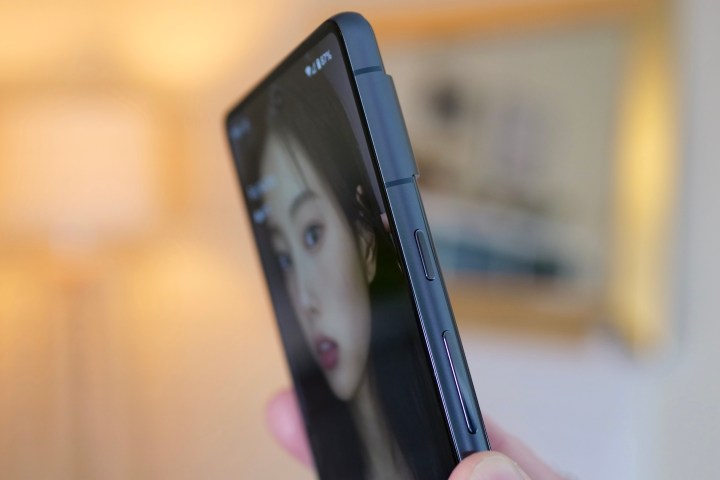
This is quite different from how Android 13 performed on Joe’s Pixel 7 Pro, and this may mean your own experience will differ as well — and this doesn’t inspire confidence. It hasn’t been perfect on my phone either, but the annoyances are minor. Scrolling through Google Discover and Twitter can be quite “muddy” and not as smooth as using powerful phones like the Galaxy Z Flip 4 or the iPhone 14 Pro. And the YouTube app does have some occasional audio problems. However, games seem to flummox the Pixel 7 far more than anything else.
I’m not a big games player, but crashes are regular in Asphalt 9: Legends, and it has had issues connecting to the server and some odd auto-pauses too, which I’ve never seen before. While the phone never gets hot for me, it’s quite warm to the touch around the camera sensor after playing games for 30 minutes. Judging by the warmth and the amount of battery power the phone pulls when playing games, it seems some optimization is needed on the gaming front. I can deal with these problems because I don’t play games that often, but if gaming is a major part of your phone use, the Pixel 7 and Pixel 7 Pro may not be the best choice.
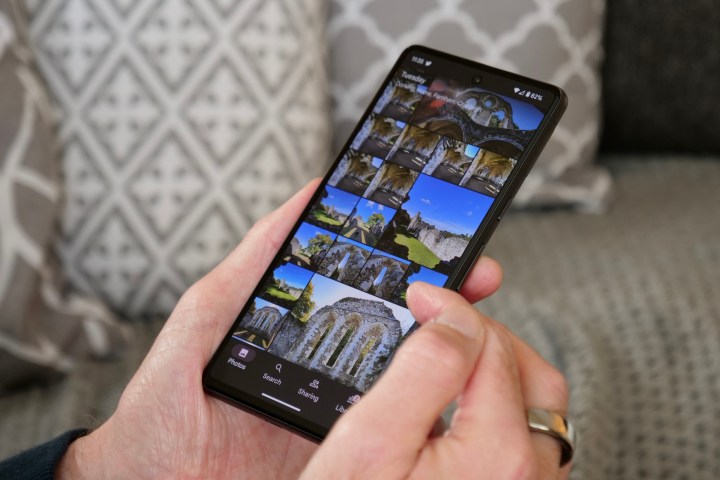
Software support from Google is excellent, and the Pixel 7 will receive the latest version of Android for several years, and also get security updates for five years. Combine this with the durability provided by an IP68 water- and dust-resistance rating, and the Pixel 7 should offer plenty of longevity.
A second opinion on the Pixel 7
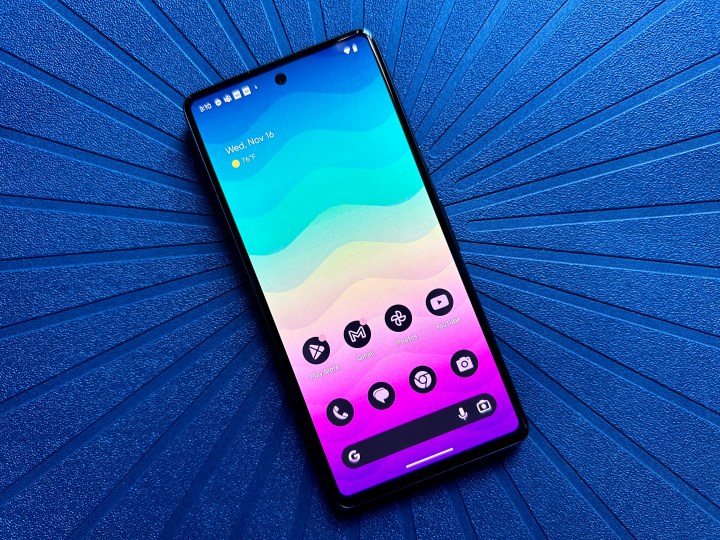
Like the headline says, the Pixel 7 is a phone that is hard to resist, but it can also be a little bit risky. However, Digital Trends’ mobile staff writer Christine Romero-Chan, who has been primarily an iPhone user for the past decade, has thoroughly been enjoying her Pixel 7. In fact, to her, the Pixel 7 is pretty much Google’s iPhone, and with good reason.
First off, as someone who is new-ish to the world of Android, Christine has been enjoying the pure Android 13 experience on the Pixel 7 without the extraneous cruft in the UI that you can find from other manufacturers of Android devices. The software has been fast, responsive, and reliable — she hasn’t really experienced the bugginess and glitches that others have encountered so far.
And with Google’s own Tensor G2 chip, everything just runs smoothly, at least most of the time. While the Tensor G2 isn’t going to beat out other chips in terms of benchmarks, it works great for what I use my phone for, which is mostly for communication and photo editing on the go. Gamers may want to look elsewhere for a more gaming-optimized phone, like the ASUS ROG Phone 6 Diablo Edition, but if you don’t plan on using the Pixel 7 for serious gaming, it’s great.
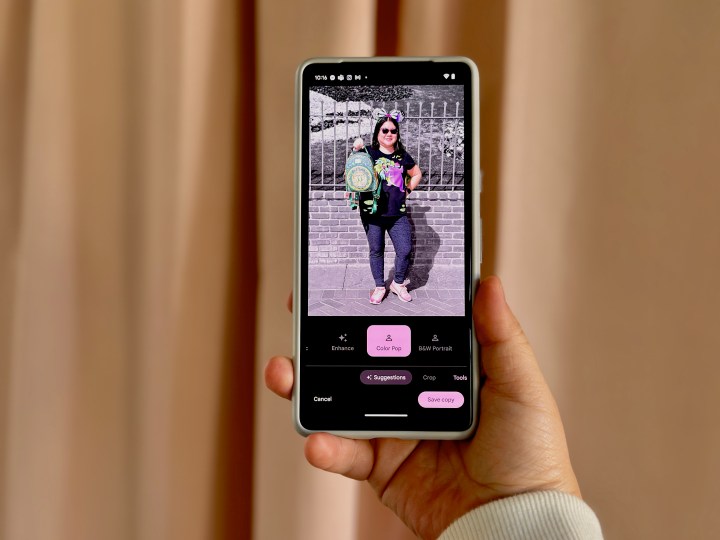
Another reason Christine loves the Pixel 7 is because of the photo editing features that are made possible with the Tensor G2, like Magic Eraser. For the most part, Magic Eraser is fantastic for cleaning up photos, especially those pictures at Disneyland with some people in the background that are ruining an otherwise great shot. But of course, after a bit of testing, she realized that Magic Eraser works best when there are just one or a few people in the background. When you try to erase dozens of people, the resulting image just doesn’t look great with all the digital artifacts left behind. But that isn’t her favorite part of photo editing on the Pixel 7; other smart suggestions from the AI on Tensor G2 do end up making the original photo look better, thus making photo editing easier than ever.
Photos look more true-to-life with the Pixel 7 and don’t feel over-processed or washed out.
Speaking of photos, the cameras on the Pixel 7 continue to impress. Snapping images is quick and easy, and Christine likes how the Pixel 7 handles its processing of colors and skin tones even more than the iPhone 14 Pro. Photos look more true-to-life with the Pixel 7 and don’t feel over-processed or washed out. It’s also very appreciated that the Pixel 7 and Android 13 come with other built-in camera modes, like long exposure, action pan, photosphere, and more — these are camera features that she wishes Apple would add to iOS, considering that Apple always likes to tout how the iPhone is used for creative photography.
Though the Pixel 7 is not her primary phone (iMessage is too good to give up), Christine’s been thoroughly enjoying the Pixel 7 as a secondary phone. Again, it’s a bit of a risk considering that others may have issues with the software performance and battery life, but Google makes up for it with the photo editing tools and other AI features with Tensor G2.
Google Pixel 7 price and availability
The Google Pixel 7 costs $599 for the 128GB model or $699 for the 256GB version. There is no MicroSD card slot, so choose the amount of internal storage wisely. In the U.K. the Pixel 7 costs 599 British pounds and 699 pounds, respectively.
Around the same price are the Samsung Galaxy A53 and the iPhone 14, and both are excellent choices. Slightly more left field is the Motorola Edge (2022), which impressed us recently. What’s more interesting is you can also buy some excellent phones for less than the Pixel 7. The Google Pixel 6a is an excellent example of a phone that provides a great deal of what makes the Pixel 7 desirable, just for less money. In the U.K., the Nothing Phone 1 is also worthy of consideration with its clean software and unique design.
In the Google Pixel 7, confidence is everything
I am very happy to recommend my Pixel 7 to anyone wanting a reasonably priced smartphone with a great camera, excellent software, and for the most part, long battery life. Notice I said “my” Pixel 7? It’s because I’m not absolutely sure everyone will have the same experience with the Pixel that arrives on their doorstep. Joe’s experience with the Pixel 7 Pro is very different from mine with the Pixel 7, and other reviews online also highlight issues I have not faced at all.
I don’t lack confidence in MY Pixel 7, but I do lack confidence in the Pixel 7 as a whole — it’s rare to see and hear differing opinions and experiences about a new device, and that sounds alarm bells. The same inconsistency happened with the Pixel 6 and Pixel 6 Pro, making it doubly frustrating. I want to tell you to buy this phone with confidence, but I can only do so with that slight caveat for now.
The Pixel 7 has a few problems, most notably the troubling gaming performance and slow charging, but neither of these blight the phone horribly. It’s a great smartphone, and although not a huge upgrade over the Pixel 6, the price makes it highly desirable, considering the camera’s ability and the quality software installed. It’s just that I’m not absolutely convinced the Pixel 7 you will get will be identical to mine. Is it worth the risk? Sure, just make a note of Google’s 15-day return guidelines in case it’s a lemon.
(To find our thoughts on the larger and more expensive Pixel 7 model, see our Google Pixel 7 Pro review.)
Editors' Recommendations
- Your Pixel 7 is about to get a whole lot less buggy — here’s why
- The Galaxy Watch 6 may fix one of the Galaxy Watch 5’s biggest mistakes
- What is 5G UC? Here’s what that icon on your phone really means
- The best voice-recording apps for iPhone and Android in 2023
- Watch the Galaxy S23 Ultra and iPhone 14 Pro Max face off in brutal drop test






